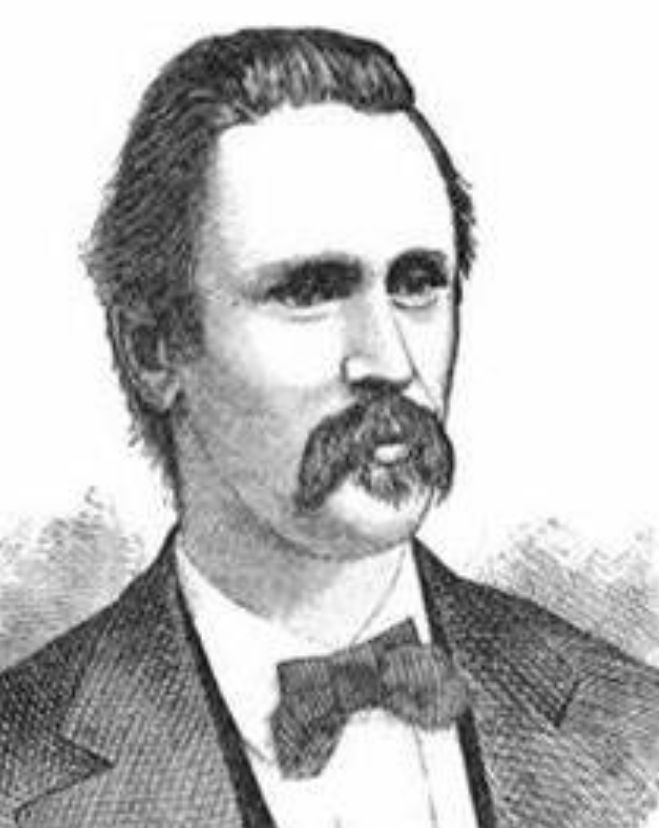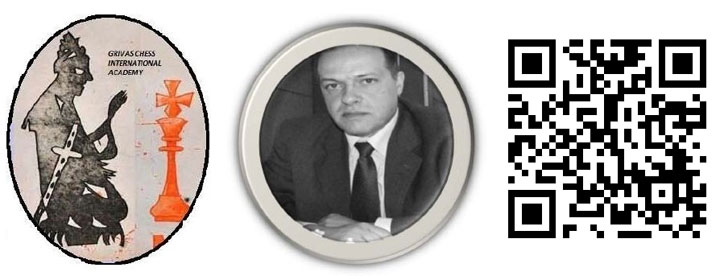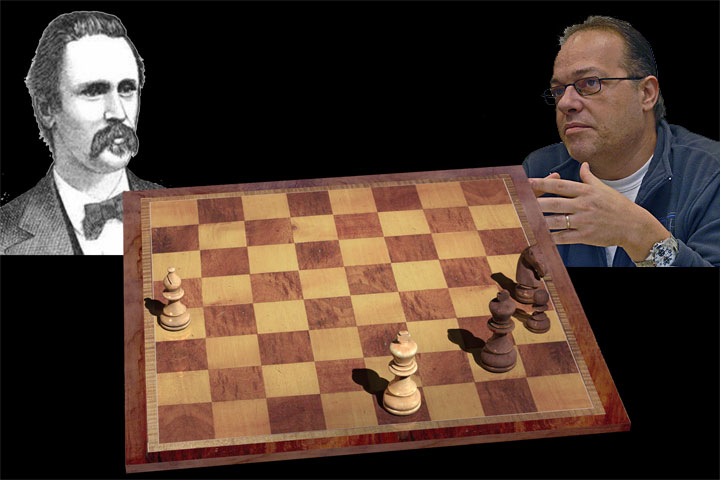
Sam Loyd (January 30, 1841 – April 10, 1911) was an American chess player, chess composer, puzzle creator, and recreational mathematician, widely regarded as one of the greatest puzzle inventors and popularizers in history.
Born in Philadelphia and raised in New York City, Loyd began composing chess problems at the age of 14, and quickly gained recognition, becoming the leading American chess problemist by his late teens. Loyd's problems are celebrated for their wit, humour, and originality. He published numerous chess problems and studies in prominent magazines and books, influencing generations of chess enthusiasts.
The following theme appeared for the first time in study of the great composer:
The solution: 1.Bd7! The only way, as the pawn should be forced to get onto its 7th rank. White would be lost after 1.Bc6+? Kg1 2.Bh1? Kxh1 3.Kf1 Kh2 4.Kf2 Ng6 5.Kf1 Kg3 6.Kg1 Ne5 7.Kh1 Ng4 8.Kg1 h2+ 9.Kh1 Nf2#.
1...h2. 1...Nf3+, is going nowhere after 2.Ke2 Nd4+ 3.Ke3 h2 4.Kxd4! h1Q 5.Bc6+ Kh2 6.Bxh1 Kxh1.
2.Bc6+ Kg1 2...Nf3+ 3.Ke2 h1Q 4.Bxf3+ =.
3.Bh1! The saving idea! 3...Kxh1 3...Ng2+ 4.Ke2 Nf4+ 5.Ke1 =, isn't much different.
4.Kf2! The idea has to be conducted correctly. There is always room for a wrong decision, as can easily be proved: 4.Kf1? Nf3 5.Kf2 Nd2 -+. ½-½.
It seems that this 1860 study was the first to deal with our concept. But somehow, the ending wasn’t named after Sam Loyd. Some years later, the following study was made:
1.Kb6! The only winning move, as the black king should not be allowed to get back to the 7th or 8th rank. 1...Kc4. 1...Ka4, is losing to 2.Nc6 Kb3 3.Na5+ Kb4 4.Nb7 Kc4 5.Kc7 Kd5 6.Kb8 +-. 2.Na6 Kd4. 2...Bf3 3.Nc5 Ba8 4.Nb7 Kd5 5.Kc7 Ke6 6.Na5 Ke7 and we have a famous Chekhover study, which is just a sideline of Horwitz's: 7.Kc8! +-.
3.Nc7. 3.Nc5, wins as well: 3...Kd5 4.Nb7 Ke6 5.Kc7 Ke7 6.Na5 (6.Kb8? Kd7! 7.Kxa8 Kc8 =) 6...Ke8 7.Nc4 Ke7 8.Kb8 Bh1 9.Na5 +-. 3...Bg2 4.Ne6+ Ke5 5.Nd8 Ba8 6.Kc7 Kd5.
7.Nb7. But not 7.Kb8? Kd6! 8.Kxa8 Kc7 =. 7...Ke6 8.Na5 Ke7 9.Kc8 Ke8 10.Nc4! Ke7 11.Kb8 Kd8 12.Na5 Kd7 13.Nb7! Kc6 14.Kxa8 Kc7 15.Nd6 1-0.
Now that you are well acquainted with the theme, here are two studies for you to solve. You can move the white pieces on the diagram, which will defend for Black.
And here for you to go through or download the above studies we present them in the replayer, where you can also start an engine to enhance your analysis.
More studies to follow...
 Grivas Chess International Academy
Grivas Chess International Academy
Free Educational Editions
Download for free – Please Like & Share!
Use the above-right QR-Scan or click the link below
A Greek Warrior - Theodorou (40 pages): A portrait of the No1 Greek player!
FIDE World Championship 2024 (103 pages): The last FIDE WC, fully presented!
Fischer vs Greece 1968 (40 pages): The famous Clock-Simul of the great Bobby!
Greece vs Polgar Scheveningen 1990 (84 pages): A mostly unknown event, presented 35 years after!
Greece vs Greats (56 pages): Classical Matches of Greeks vs. Greats
The Grandmaster Program (248 pages): A classical book on creating GMs!
The Art of War (130 Pages): The famous 2400 years earlier book of Sun Tzu, connected to Chess!
Grivas CIA Newsletter 01 - January 2025 (48 pages): The monthly edition of the Grivas CIA.
Grivas CIA Newsletter 02 - February 2025 (74 pages): The monthly edition of the Grivas CIA.
Grivas CIA Newsletter 03 - March 2025 (74 pages): The monthly edition of the Grivas CIA.
Grivas CIA Newsletter 04 - March-2 2025 (70 pages): The extra monthly edition of the Grivas CIA.
Grivas CIA Newsletter 05 - April 2025 (80 pages): The extra monthly edition of the Grivas CIA.
Grivas CIA Newsletter 06 - May 2025 (84 pages): The extra monthly edition of the Grivas CIA.
All games are included in the separate PGN file you can find in the folders!
The folder will be renewed every month, with new material/editions, specially prepared by the
Grivas Chess International Academy
An Official World Federation (FIDE) Academy since 2012

























